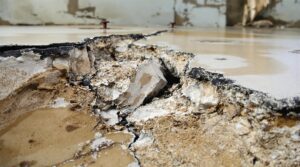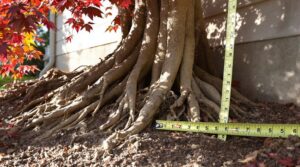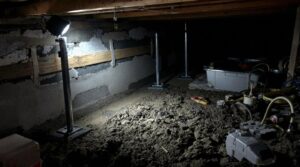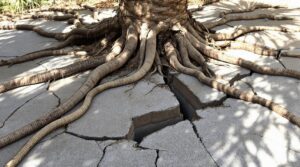Maple tree roots can potentially damage foundations due to their extensive growth pattern, which can exert significant pressure on adjacent structures. The roots can spread up to 3-4 times the diameter of the tree's canopy, increasing the risk of damage. Factors such as soil quality, moisture levels, and tree spacing influence the extent of root growth. A closer examination of the risks and prevention strategies can provide a more thorough understanding of this issue.
Key Takeaways
- Maple tree roots can spread up to 3-4 times the diameter of the tree's canopy, potentially reaching and damaging nearby foundations.
- The extensive root growth of maple trees can exert significant pressure on adjacent foundations, causing cracking and shifting.
- Factors increasing the risk of foundation damage from maple tree roots include proximity, root growth pattern, soil type, and moisture levels.
- Visible signs of foundation damage caused by maple tree roots may include cracks in walls and ceilings, uneven floors, and sticking doors and windows.
- Installing root barriers and controlling soil moisture can help prevent or mitigate foundation damage caused by maple tree roots.
How Far Can Maple Tree Roots Spread?
Maple tree roots can cover considerable distances, with some species spreading their root systems up to 3-4 times the diameter of the tree's canopy.
This extensive root growth allows the tree to absorb moisture and nutrients from a wide area, enabling it to thrive in a variety of environments. The root system's expansion is also influenced by factors such as soil quality, moisture levels, and tree spacing.
In general, maple trees planted in well-draining soil with adequate moisture tend to develop more extensive root systems than those planted in poor soil conditions.
Understanding the extent of maple tree root growth is essential for determining ideal tree spacing in landscaping and urban planning applications.
Can Maple Tree Roots Really Damage a Foundation?
The extensive root growth of maple trees, which can spread up to 3-4 times the diameter of the tree's canopy, raises concerns about potential damage to nearby structures.
As the roots grow in search of water and nutrients, they can exert significant pressure on adjacent foundations. This pressure can lead to cracking and shifting of the foundation, particularly if the tree is in close proximity to the structure.
Some ways that maple tree roots can damage foundations include:
- Root encroachment: Roots can grow into existing cracks and crevices, further compromising the foundation's integrity.
- Soil displacement: As roots grow, they can displace soil and cause it to shift, leading to uneven settling of the foundation.
- Pressure buildup: The sheer force of the growing roots can exert pressure on the foundation, causing it to crack or shift over time.
Factors That Increase the Risk of Foundation Damage
Proximity to a maple tree greatly increases the risk of foundation damage, particularly when combined with other site-specific factors. The tree's root growth pattern plays a noteworthy role in determining the likelihood of damage.
Maple tree roots tend to grow outward and downward, extending beyond the tree's canopy. This extensive root system can infiltrate and disrupt the surrounding soil, leading to settlement issues and structural problems.
Soil type also affects the risk of foundation damage. Soils with poor drainage, high clay content, or low bearing capacity are more susceptible to root-related damage.
For example, expansive clays can shrink or swell considerably in response to changes in moisture levels, exacerbating the impact of root growth. Understanding these site-specific factors can help property owners and builders assess the risk of foundation damage and implement measures to mitigate potential problems.
Proper tree placement and soil management can minimize the risk of damage.
Signs of Foundation Damage Caused by Maple Tree Roots
Identifying the signs of foundation damage caused by maple tree roots is a critical step in addressing potential problems before they escalate into costly repairs.
Maple tree roots can cause significant damage to foundations, resulting in costly and time-consuming repairs. Recognizing the signs of damage early can help mitigate the issue.
Signs of foundation damage caused by maple tree roots include:
- Visible cracks: Cracked walls and ceilings can be a clear indication of foundation damage. Cracks may appear as hairline fractures or large fissures, and may be more noticeable after periods of heavy rainfall or extreme weather conditions.
- Uneven floors: Maple tree roots can cause foundation shifting, leading to uneven floors and a change in the home's overall layout.
- Doors and windows sticking: As the foundation shifts, doors and windows may become stuck or difficult to open and close, indicating a potential problem.
Preventing and Mitigating Foundation Damage From Maple Tree Roots
Because maple tree roots can cause significant damage to foundations, preventative measures are essential to avoiding costly repairs.
One effective method of prevention is to install a root barrier, a physical or chemical obstruction designed to redirect or deter root growth away from the foundation. Root barriers can be made of materials such as plastic or metal sheets, or they can be chemical-based treatments applied to the soil.
Controlling soil moisture can also help mitigate the risk of foundation damage. Maple tree roots are more likely to grow towards areas with high soil moisture, which can lead them to encroach on the foundation. Proper irrigation practices, such as watering trees at a safe distance from the foundation, can help to reduce soil moisture levels and discourage root growth towards the foundation.
Effective prevention and mitigation strategies can safeguard the foundation from damage caused by maple tree roots.
Frequently Asked Questions
Are Some Maple Tree Species More Likely to Cause Foundation Damage Than Others?
Some maple species exhibit varying root growth characteristics, with Silver and Bigleaf maples producing more extensive root systems, increasing the likelihood of foundation damage, whereas Sugar and Red maples tend to have deeper, less invasive roots.
Can a Single Maple Tree Cause Significant Foundation Damage to a House?
A single maple tree's root invasiveness can compromise foundation stability, depending on factors such as tree size, root depth, and soil conditions, potentially causing significant damage to a house's foundation over time through gradual displacement.
How Quickly Can Maple Tree Roots Grow and Cause Foundation Damage?
Maple tree roots exhibit rapid growth, with some species expanding up to 3-5 feet per year, potentially compromising foundation stability within 5-10 years, depending on factors such as soil type, moisture, and root depth.
Is It Possible to Repair Foundation Damage Caused by Maple Tree Roots?
Like a surgeon extracting a tumor, foundation repair specialists can excise damaged areas caused by maple tree roots, employing various foundation repair methods, including root barrier installation, to prevent future damage and restore structural integrity.
Can Homeowner's Insurance Cover Foundation Damage Caused by Maple Tree Roots?
Typically, a homeowner's policy excludes damage caused by maintenance-related issues, including root damage. However, some policies may offer riders or endorsements that cover root damage, which may help alleviate the financial burden of repairs.








